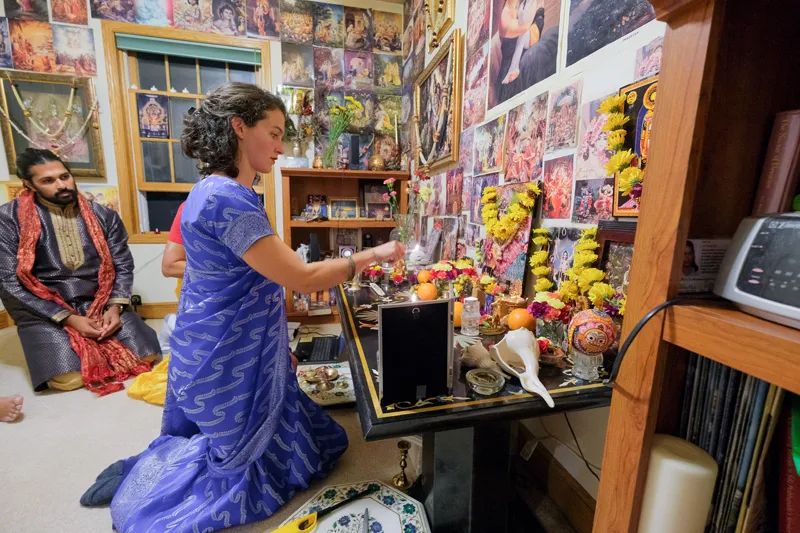
Illuminating the season
During darkest months, celebrations sparkle with hope
As winter draws near and our days become shrouded by lengthening nights, we in Montana find glimmers of hope by gathering to celebrate. Be they Christian traditions or ceremonies from other cultures – Indigenous, Jewish, (East) Indian, Hispanic – the gatherings differ yet share common threads. Through food, music, dance and displays of light, we celebrate at year’s end with the promise that the sun’s warmth and brilliance are only a few months off.
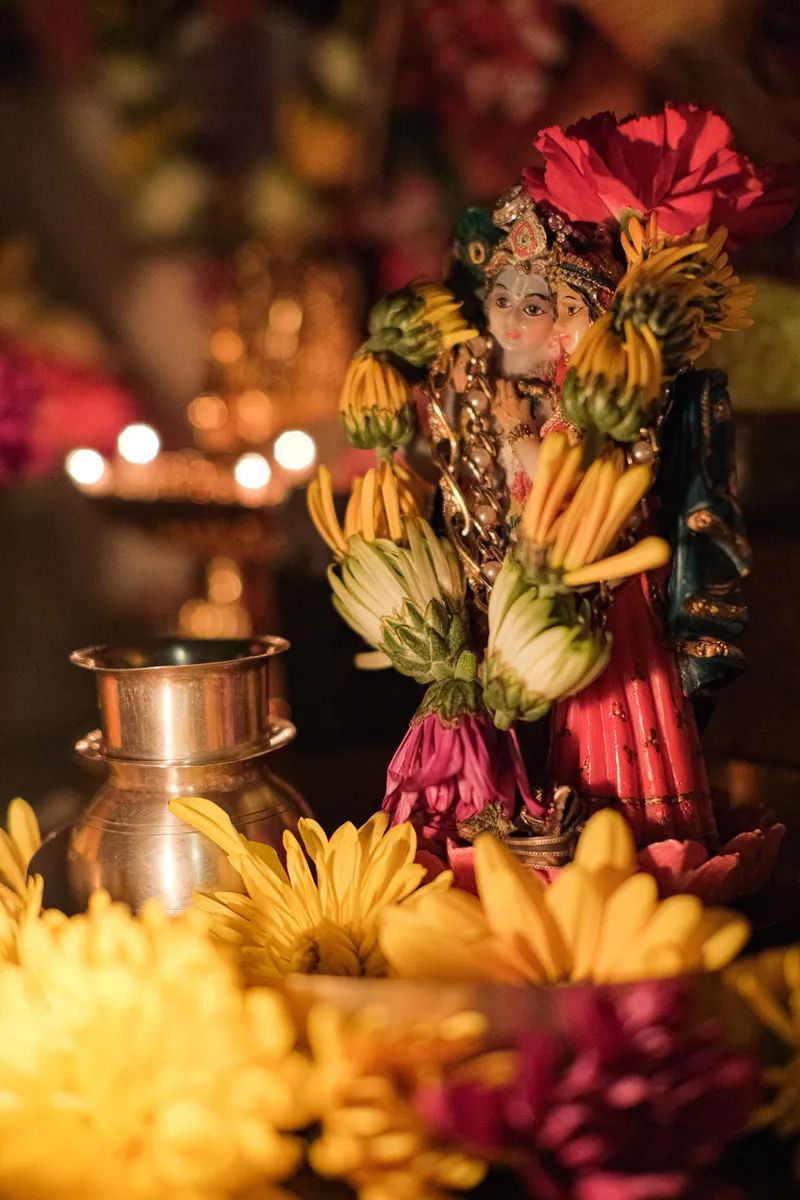
Festival of Lights
Billings’ (East) Indian community, though limited in number, observes the zenith of its religious year with Diwali (also translated as Divali or Deepavali).
Shoba Parekh, a native of Mumbai, has lived in Montana since the early 1980s. She explains that “deepa” means lights and “vali” means rows. Known as the “Festival of Lights,” Diwali celebrations worldwide include displays of many tiny clay pots (diya) that are set up in rows. Each diya is filled with purified butter (ghee) that fuels tiny lit cotton wicks.
Observed by Hindus, Jains, Sikhs and some Buddhists — each with a slightly different twist —Diwali dazzles the season and traces back to religious roots described in millennia-old Sanskrit texts.
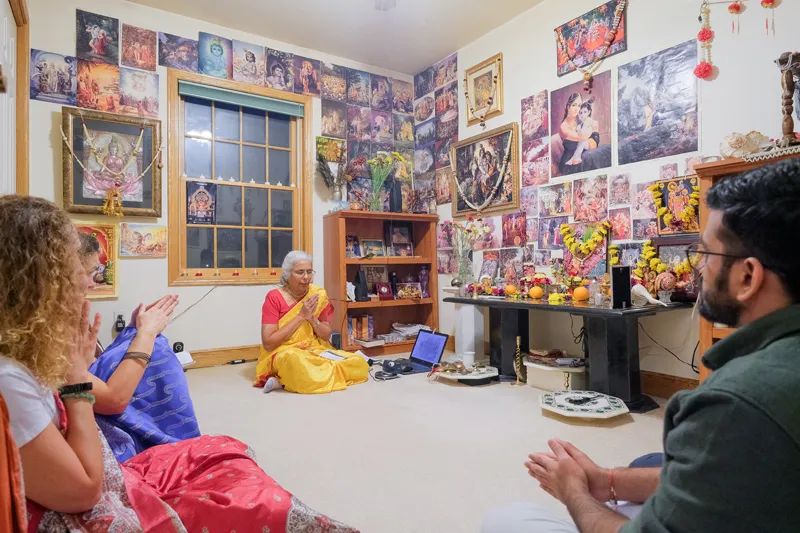
For Shoba and her family, the holiday heralds the historic return of Lord Ramchandra (also known as Lord Ram) from 14 years of exile.
“The Lord was banished in the forest and when he returns, his path is lighted with lamps,” she explains.
For Hindus, Diwali signifies the victory of light over dark, good over evil and knowledge over ignorance. Traditionally, it follows the summer harvest.
This year, Diwali falls on Nov. 4 – a date that shifts from October to November, depending on the moon and its phases. The holiday spans five days in the Indian lunar month of Kartika, which followers consider to be auspicious. The third day of Diwali, which coincides with the new moon, is considered the official holiday.
Leading up to Diwali, families traditionally scour their homes, shake out the carpets and spruce up the walls with a fresh coat of paint. Then they decorate with diya and colorful designs (rangolis) outside their doorsteps.
The third day of the holiday — the “official” Diwali — honors Laxmi, the Goddess of Fortune and Prosperity. Many Indians target that day for making investments and significant purchases – from diamond-studded jewels and opulent gold bangles to shiny new cars.
“They believe that by investing money at that time, it will increase their prosperity,” Shoba says.
The Diwali holiday shouts with vibrant colors, resplendent silks and the finest saris, often woven with border threads of gold. It calls for lavish meals that are likely to include various breads, dals (lentils), vegetable and rice dishes. Diwali is especially known for its signature sweets or mithai. Many are made from milk products and topped with delicate layers of silver.
When growing up in India, Shoba remembers going house-to-house visiting neighbors and bearing sweets.
“Here, it’s more secluded,” Shoba says, “but we still gather together.”

In Billings, Shoba and her family typically host a Diwali pot-luck feast for a mix of Indians and non-Indian friends. The group could number two dozen or more who add favorite dishes to the feast. While toddlers play games around the feet of the adults, the older generation catches up on life events.
Although Diwali is traditionally punctuated by the raucous pop of firecrackers, which can be heard at all hours and in all places, Shoba prefers listening to bhajans, the soothing, devotional songs of the Gods.
“They make us feel peaceful,” she says. “They make us think about God.”
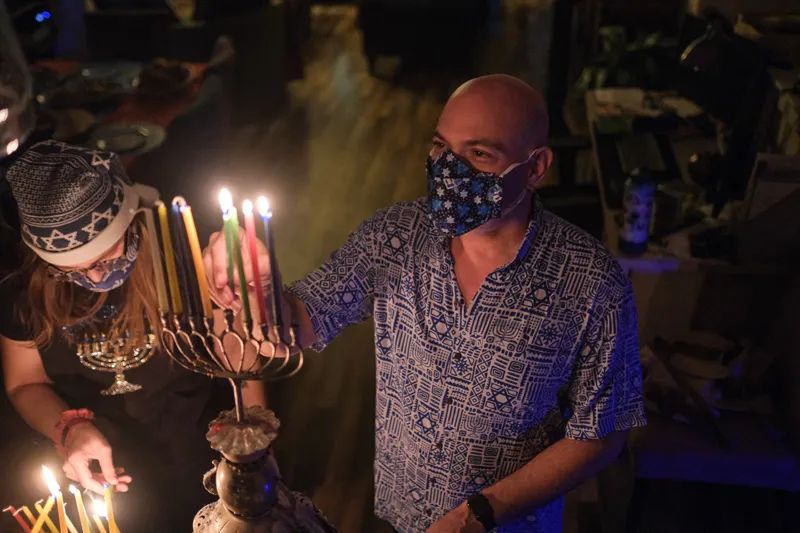
Eight Days of Light
Beginning at sunset on Nov. 28, Richie Solomon and his family will celebrate their own festival of lights. As active members of Billings’ Jewish community, they will light the menorah — more precisely, the nine-candle Chanukah menorah known as the hanukkiah.
Though Chanukah is often celebrated around Christmas, Richie’s wife, Amy Solomon, explains, it can fall anywhere from late November to late December of the Gregorian calendar. The exact day is linked to the lunar calendar and shifts based on the Jewish year, which includes a leap month every seven years. This year, the celebration lasts through nightfall on Dec. 6.
Like Diwali, the Jewish celebration of Chanukah takes place during the darkest part of the year and is linked to the phase of the moon
Richie and his wife, Amy, and daughter, Jenna, describe how they celebrate Chanukah in Billings, where the local Jewish Synagogue numbers roughly 50 families.
“We light the candles during the darkest part of the month during the darkest part of the year,” Jenna says.
“It’s not a holiday that we take off work for or pray or fast,” Richie says. “It’s a festive holiday.”
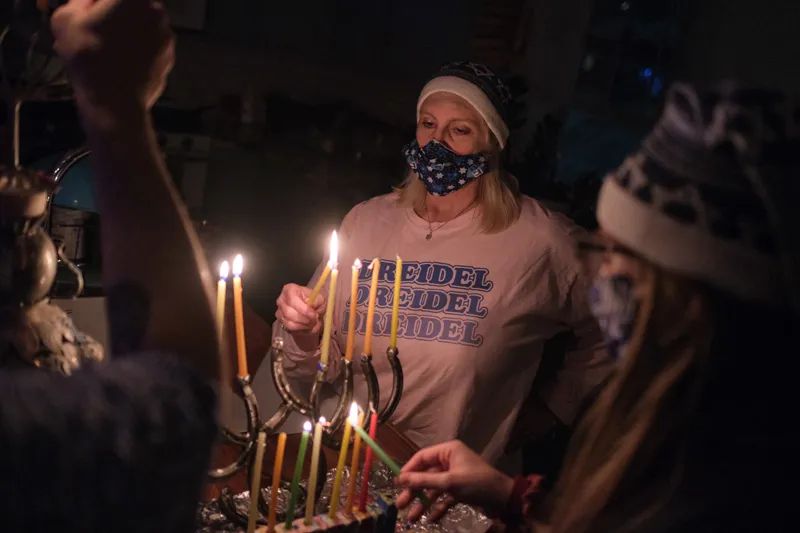
In Judaism, Chanukah is not considered a religious holiday. Nor is it enshrined in the Torah or Tanach (Hebrew Bible). Jenna summarizes Chanukah as a time to celebrate Jewish existence – to “celebrate that we’re still here to celebrate.”
Tongue in cheek, Richie summarizes the theme that runs through all Jewish holidays: “They are all based on, ‘They tried to kill us, we won, let’s eat.”
The story behind Chanukah is a story of victory that traces back to the second century BCE, when a small number of Jews, called the Maccabees, drove a large contingent of Greeks from the Second Temple, the temple famous today for the Wailing Wall. Of utmost importance to the Jews was maintaining the eternal flame within that temple. But when the Jewish victors regained control of their holy place, they discovered only enough pure olive oil remaining to keep the candle burning for one more day. And yet, the flame burned on.
“The miracle was that the oil was only supposed to last one day but it lasted eight days,” Richie says. “And that gave them time to make more.”
Hence, the eight days of Chanukah. Since the oil was central to the miracle, oil is central to the holiday. The Solomons, like many Jews, tend to incorporate oil — fried foods — into their menu throughout the holiday. By tradition, the Jewish people used olive oil, but many, like the Solomons, now stock up on canola oil instead.
“And a lot of it,” Amy says, “like two gallons.”

Two traditional Chanukah foods are latkes and jelly donuts. The latkes are fried potato pancakes that trace back to the German influence. They are made with potatoes and onions and served with apple sauce and sour cream.
Though fairly new to the Billings area, the Solomons wasted little time in connecting with the Jewish community here.
“We managed to have a Chanukah party the second year we were here,” Amy says. “We find the folks pretty easily.”

Above all, Chanukah is a time for family to gather and a time to celebrate each evening as a new candle is lit.
The hanukkiah is unique in that it includes nine candles, rather than the seven candles common to the menorah associated with the sabbath. The middle candle of the hanukkiah is known as the shamash. The shamash, which is lit by a match, ultimately lights each successive candle until all of the candles are lit on the final evening of Chanukah.
“One of my favorite things about Chanukah is seeing the light reflecting in people’s faces,” Amy says. “The candle glow is so pretty.”

A Cultural Christmas
At Billings First Congregational Church, the congregation celebrates the birth of Christ with a multicultural service that combines conventional Christian practices with traditions of the Native and Hispanic communities. The fusion of cultures — a thread common to the church’s services throughout the year — also reflects solidarity with the immigrant, refugee and LBGTQ communities.
“We are really trying to introduce other traditions and cultures,” says Lisa Harmon, senior pastor at the church. “That’s really important to us. The UCC (United Church of Christ) recognizes many paths to the true nature of God.”
Last year’s virtual Christmas Eve service, titled “Filling the Night with Music and Light,” opened with Josiah Hugs and the Goes Well Drum Group playing a Native round dance song. As the music fades, it is replaced by an image of the lighting of the multi-colored tepees atop the Rims. The tepees were erected by the Rocky Mountain Tribal Leaders Council in honor of those who had died from Covid-19 and as a symbol of hope for all communities going into 2021.
“They put up the tepees during Advent, a season when we are waiting for the light,” Lisa says. “For this community, it brought people to their knees. It was such a sign of hope.”

Photo by Jade Snell
At the beginning of the service, Lisa invites the virtual congregation to light candles or Smudges, as they prefer. The Smudges — smoke from smoldering sage — are intended to connect people to their Creator and to purify the body and soul.
Walter and Kassie Runsabove are church members who retain strong ties to their Native roots – he is Northern Cheyenne, Oglala Lakota and Hudesana Nakoda. She is from the Gros Ventre or Aaniiih trible. As a child baptized in a Dakota Presbyterian parish, Walter remembers playing Jesus’ father Joseph in the Christmas play. Today, the couple celebrates the season by blending cultures.
Their more typical Christmas practice involves taking each of their three children on separate “dates.”
“We go to the store and they pick out two gifts for each of their siblings,” Walter explains.
But the Winter Solstice, which occurs only days before Christmas, has a much longer history for the Runsabove family and their ancestors. They observe the shortest day by gathering together and sharing their visions for the upcoming year. The solstice is celebrated with a menu of traditional Indigenous foods — berries, dried meat (usually wild game of some sort), turnips and wild rice.
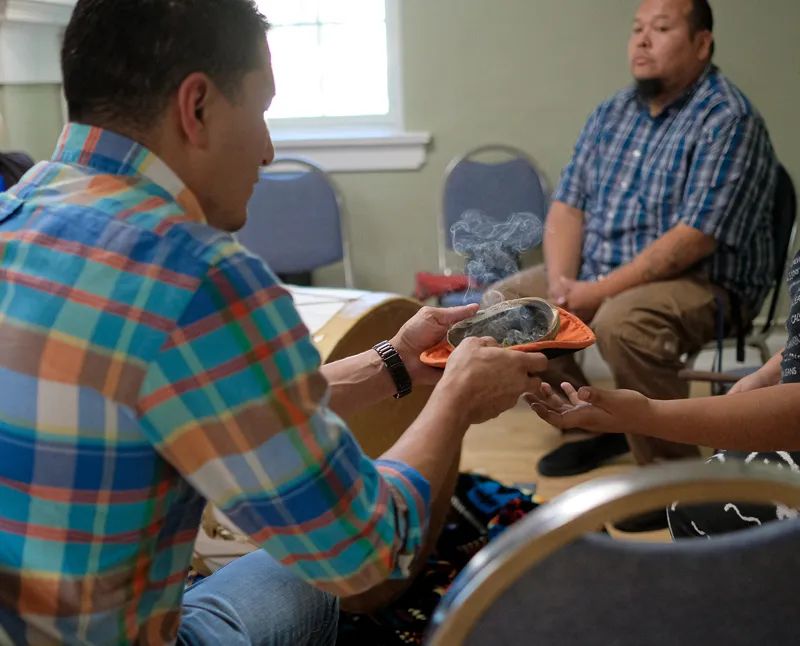
At Billings First Congregational, members honor the Winter Solstice with a silence that is broken only by the deep hum resonating off sound bowls.
“There is no talking,” Lisa says. “We pray or some lay down on the floor.”
Likewise, church members show support for the local immigrant community by joining the Montana Interfaith Group for Las Posadas (posada meaning lodging or accommodation, as it relates to the Nativity story). The Hispanic tradition echoes the footsteps of Joseph and Mary – Lisa reminds her congregation that they are “two young, brown-skinned parents” — as they traveled from place to place seeking shelter for Jesus’ impending birth.
“It re-enacts the journey they made when they finally found room at the inn,” Harmon says.
In Billings, the symbolic journey begins and ends on the South Side, with participants singing as they walk from church to church until they finally reach a place where they are invited inside. Once inside, they celebrate over a big meal of Mexican fare.
This year, the event has been scheduled for the second Saturday of December and hopefully can be practiced in person.
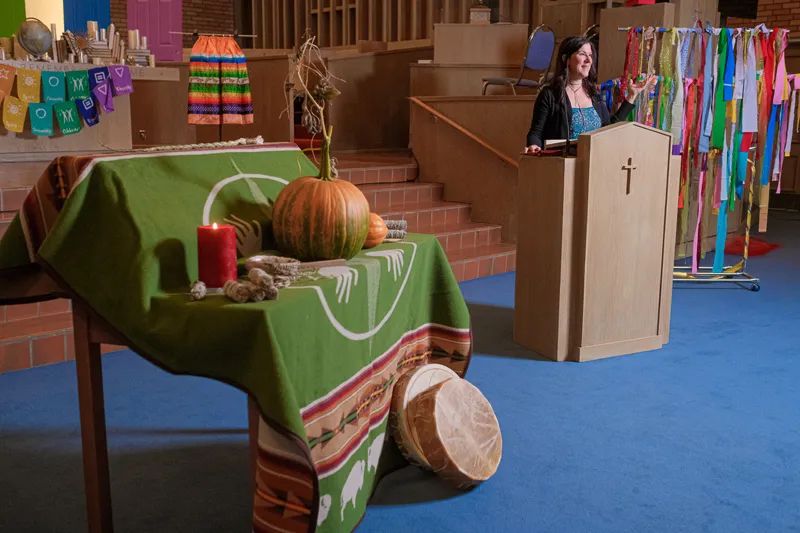
First Church’s upcoming Christmas Season will reflect its theme “Housing the Holy.” The children will make luminarias to brighten the church and congregants will bring donations of non-perishable foods. Lisa challenges everyone to break open their hearts “and house the holy as we’re called to do.”
“We want to be a center of life and community here,” Lisa says. “We draw upon different cultures and traditions to transform us, as we work toward the wholeness of all God’s people. We want to use our church campus in a way that brings reconciliation, healing and peace.”











